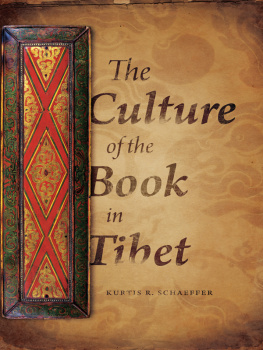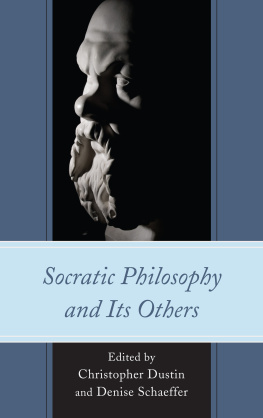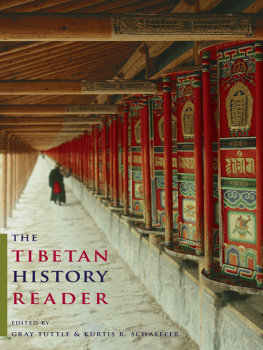Schaeffer - The Culture of the Book in Tibet
Here you can read online Schaeffer - The Culture of the Book in Tibet full text of the book (entire story) in english for free. Download pdf and epub, get meaning, cover and reviews about this ebook. City: New York;Tybet (Chiny, year: 2014;2011, publisher: Columbia University Press, genre: Religion. Description of the work, (preface) as well as reviews are available. Best literature library LitArk.com created for fans of good reading and offers a wide selection of genres:
Romance novel
Science fiction
Adventure
Detective
Science
History
Home and family
Prose
Art
Politics
Computer
Non-fiction
Religion
Business
Children
Humor
Choose a favorite category and find really read worthwhile books. Enjoy immersion in the world of imagination, feel the emotions of the characters or learn something new for yourself, make an fascinating discovery.
The Culture of the Book in Tibet: summary, description and annotation
We offer to read an annotation, description, summary or preface (depends on what the author of the book "The Culture of the Book in Tibet" wrote himself). If you haven't found the necessary information about the book — write in the comments, we will try to find it.
Schaeffer: author's other books
Who wrote The Culture of the Book in Tibet? Find out the surname, the name of the author of the book and a list of all author's works by series.
The Culture of the Book in Tibet — read online for free the complete book (whole text) full work
Below is the text of the book, divided by pages. System saving the place of the last page read, allows you to conveniently read the book "The Culture of the Book in Tibet" online for free, without having to search again every time where you left off. Put a bookmark, and you can go to the page where you finished reading at any time.
Font size:
Interval:
Bookmark:
Kurtis R. Schaeffer
COLUMBIA UNIVERSITY PRESS
NEW YORK

COLUMBIA UNIVERSITY PRESS
Publishers Since 1893
New York Chichester, West Sussex
cup.columbia.edu
Copyright 2009 Columbia University Press
All rights reserved
E-ISBN 978-0-231-51918-2
Library of Congress Cataloging-in-Publication Data
Schaeffer, Kurtis R.
The culture of the book in Tibet / Kurtis R. Schaeffer.
p. cm.
Includes bibliographical references and index.
ISBN 978-0-231-14716-3 (cloth : alk. paper)
ISBN 978-0-231-51918-2 (electronic)
1. Buddhist literature, TibetanHistory and criticism. 2. Buddhism and culture. 3. Tibet (China)Civilization. I. Title.
BQ7622.S35 2009
002.095l5-dc22
2008036987
A Columbia University Press E-book.
CUP would be pleased to hear about your reading experience with this e-book at .
References to Internet Web sites (URLs) were accurate at the time of writing. Neither the author nor Columbia University Press is responsible for URLs that may have expired or changed since the manuscript was prepared.

Every work is the work of many things besides an author.
PAUL VALERY
W hat was the cultural, social, and economic significance of the book in Tibet? How did scholars in Buddhist traditions edit works of religion, literature, art, or science? How was the written word implicated in the construction of power and authority in Buddhist societies? The present book is an attempt to address these questionsissues of broad significance for understanding Buddhist cultures throughout Asiaby looking at a single cultural location, Tibet, from the mid-thirteenth to the mid-eighteenth centuries. A motivating conviction is that what has been referred to as a cult of the book in Indian and other Buddhist cultures is more productively conceived as a culture of the book in Tibet, for the devotional practices that have been highlighted in India can, in the case of Tibet, be viewed as but one part of a set of interrelated material and cultural practices. The book in Tibet is variously the embodiment of the Buddha's voice, a principal tool in education, a source of tradition and authority, an economic product, a finely crafted aesthetic object, a medium of Buddhist written culture, and a symbol of the religion itself. From the earliest examples of Tibetan writing upon imperial stele to the mass production of printed canons a thousand years later, Tibetan scribes, scholars, and kings have explicitly made reference to the importance of books and the written word in areas of life from social authority to soteriology. Tibetan scholars of the five traditionally classified forms of knowledge (arts and crafts, medicine, language, logic, and the inner art of Buddhism) have exhibited passionate involvement with written cultureeditorial theory; translation practices; forging authoritative transmissions of knowledge, practice, and lineage. Yet relatively little is known about the specific contours of the culture of the book in Tibet, such as the roles of patronage in the production of texts, the economic and social implications of producing the massive canons of Buddhist literature on the Himalayan plateau, the position of the scribe in society, and working life in a Buddhist scriptorium.
The present work concentrates on the bookbe it a handwritten manuscript or a printed volumeand more broadly the written word (inscription, charm, carved mantra, etc.) as a locus of cultural and social practices. It is a contribution to the loosely defined area of inquiry known as the history of books. It is in no sense a comprehensive narrative history of the Tibetan book (a project for the next generation), but rather a set of linked case studies highlighting central themes in the study of written culture in Tibet. The temporal focus begins in the fourteenth century and the formative period of text-critical literature at Shalu monastery in west-central Tibet. From there the chapters trace an arc through the intervening centuries to the eighteenth century and the editors of Deg in eastern Tibet, plotting important points in the history and culture of the book in central, western, and eastern Tibet. This temporal range suggests a constructive unity, for this five-century period marks the age of the Buddhist canons (the Kangyur and Tengyur). Within this framework the central chapters offer detailed description and analysis of select moments in the cultural history of books, all of which are united by the intersection of explicit references in the sources to textual scholarship, the production of Buddhist culture, and the social and economic roles of books in Tibet. The book is a particularly rich focal point in the study of Tibetan cultural history, for it is a nexus of intellectual, religious, social, artistic, and economic aspects of life. A physical instantiation of learned culture and tradition, the book serves as a principal point for debating culture, whether the role of libraries in religious institutions, the relative merits of oral and written teachings, or the price of translated literature. The study of this single yet immensely important object of material culture, offers greater understanding of the cultural and social history of Tibet and of Buddhism.
In what follows I have sought a balance between thematic presentation and specific case studies of books, their makers, and their times and places. Each chapter centers on the activities of a few particular times and places while introducing a particular theme. To a greater or lesser extent, most chapters focus on the scholars who were engaged in work on language, literature, translation, editing, and book production. Some chapters dwell on the technical skills of editing manuscripts; others look more closely at the roles that writing and book production have played in the social and cultural life of Tibet or highlight the place of textual scholarship in the formation of individual scholars identities. offers an explanation for the importance of the book in the economic, social, and cultural spheres of Tibetan life as an integral whole by suggesting that its immense symbolic potential works in concert with its aesthetic richness and material value to perpetuate the culture of the book. The chapter ends by returning one last time to Deg to hear the comments of Situ and Shuchen regarding the personal, social, cultural, and soteriological implications of their work as textual scholarsarchitects of the culture of the bookfor while this work was often praised by their patrons, their kings, their students, and colleagues, it also became at times a cause for the king's censure and the scholar's lament. The epilogue offers without interpretation a story that recounts in a popular style the material, economic, and symbolic aspects of book culture in Tibet highlighted here. The Boy Who Wrote Stras on the Sky forms chapter 13 of a collection known as Benefits of the Diamond Cutter Stra, which contains fifteen miracle tales depicting the wondrous fate ensured for those who recite that famous Stra.

This book has developed over a decade and in a variety of venues. My interest in traditional editorial theory began in a class on the textual criticism of Indian texts led by William Arraj at the University of Washington in 1994, and developed in Richard Salomon's seminar on the history of Sanskrit as well as his sometimes quadrilingual reading seminars in Indian Buddhist literature. The tools of traditional scholars trades became an ongoing interest in Leonard van der Kuijp's ever-rewarding seminars on Tibetan philology (out of which arose many unanswered and thus still productive questions) at both the University of Washington and Harvard University. My shift in focus from textual criticism toward the history of the book came about in the late 1990s with the growing feeling that, prior to (and as an integral aspect of) studying the social and cultural settings of their discursive content, I would do well to become acquainted with the processes by which the thousands of volumes of Tibetan literature at my disposal as a contemporary student of Buddhism and Tibetan culture came to be formed. The methodological challenge motivating this interest is perhaps best expressed in succinct terms by D. F. McKenzie, who argues that new readers make new texts, and their new meanings are a function of their new forms. In my own studies, the Tibetan book became not merely a source of discourses and practices but a crafted symbolic object itself formed by important discourses and practices, fully and simultaneously enmeshed in the economic, social, and cultural practices of Tibet. Rather than an inert container that adds nothing to the data contained within it, the book as such suddenly became full of data aboutand a principal source forthe cultures in which it was involved. The container, so to speak, had become the content; the material had become the cultural.
Font size:
Interval:
Bookmark:
Similar books «The Culture of the Book in Tibet»
Look at similar books to The Culture of the Book in Tibet. We have selected literature similar in name and meaning in the hope of providing readers with more options to find new, interesting, not yet read works.
Discussion, reviews of the book The Culture of the Book in Tibet and just readers' own opinions. Leave your comments, write what you think about the work, its meaning or the main characters. Specify what exactly you liked and what you didn't like, and why you think so.














